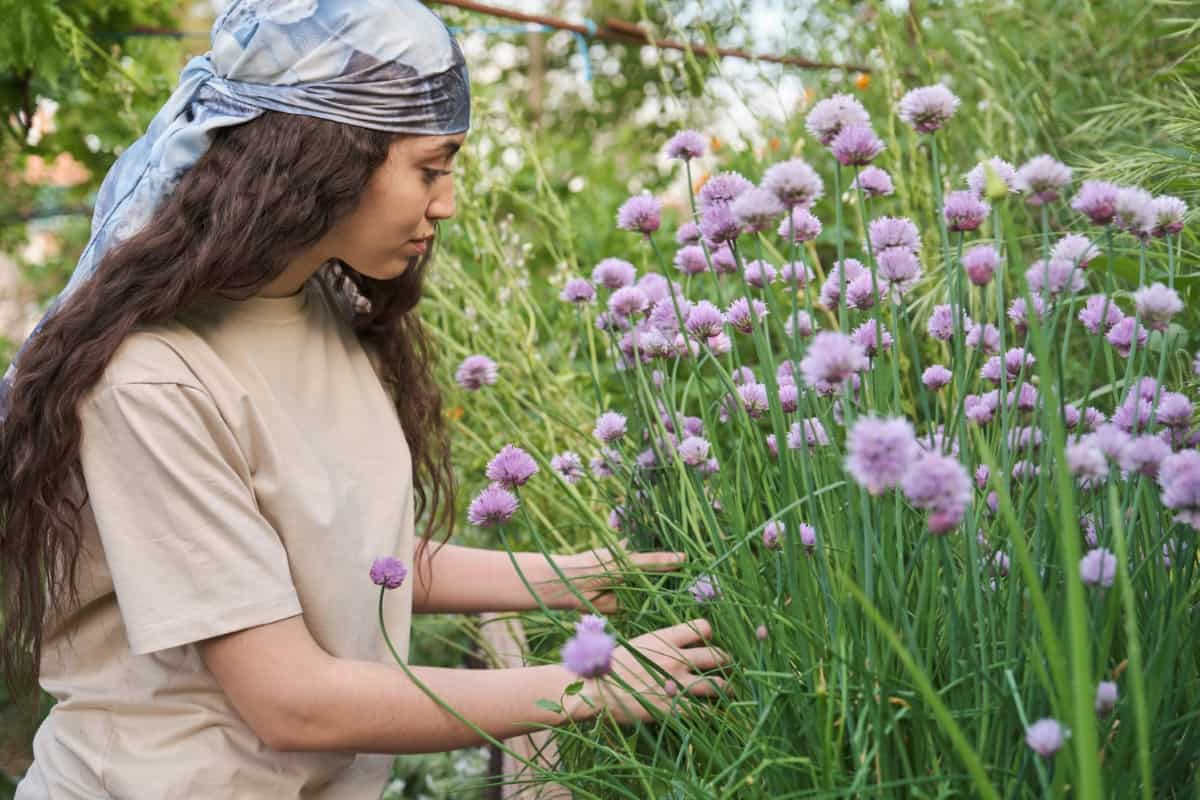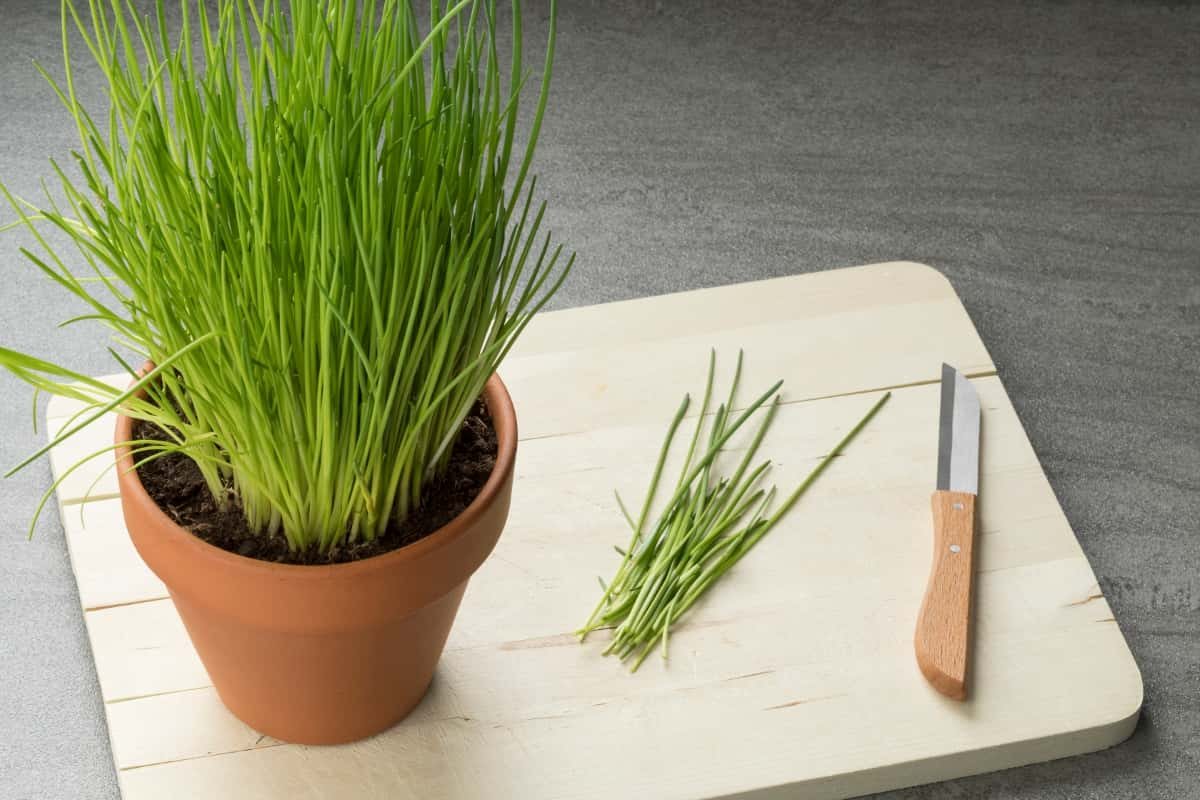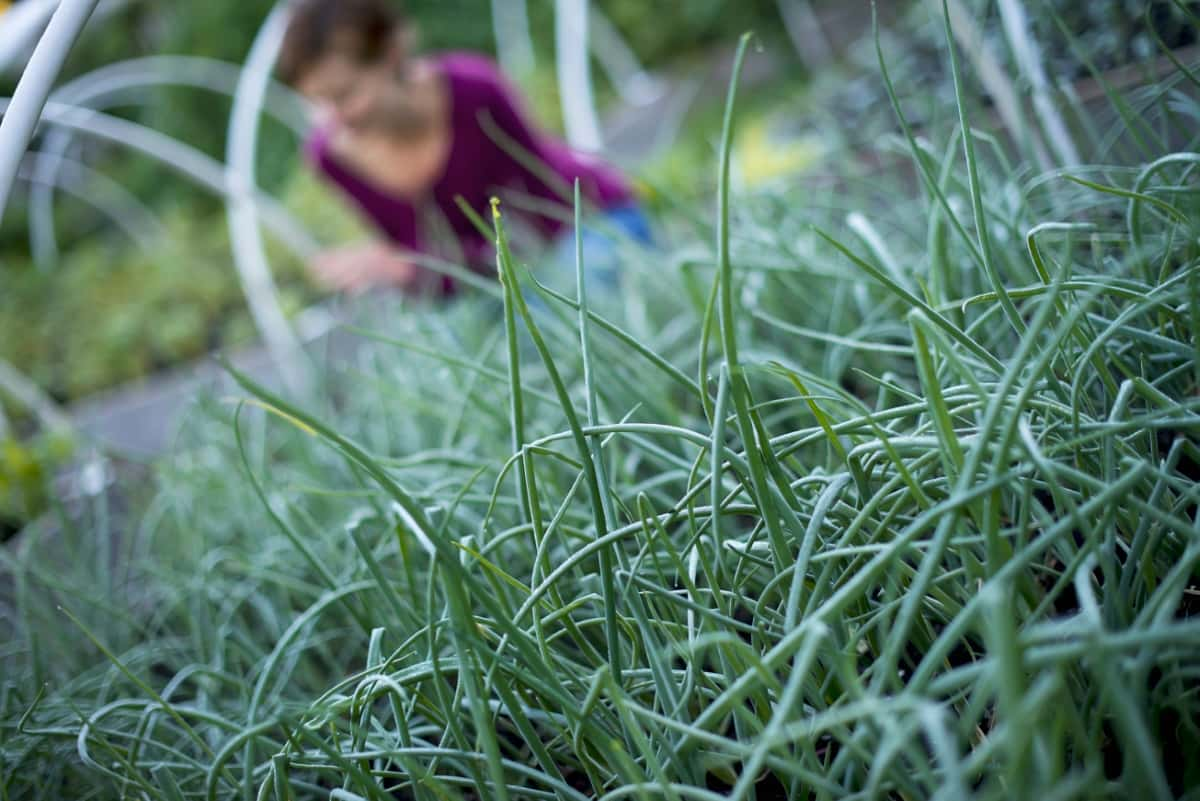Chives are a perennial plant and a member of the onion family. They are highly valued for their culinary and ornamental uses. Growing chives is a rewarding experience for beginner gardeners as they are easy to maintain, capable of growing in various conditions, and offer abundant yields year-round.

Whether growing chives in pots or directly in the ground, understanding the key aspects of chive cultivation will ensure a vibrant, bountiful harvest. This article covers everything you need to know about growing and caring for chives, including soil requirements, watering needs, propagation methods, and the steps to grow chives from seed successfully.
How to Grow and Care for Chives
Best Soil for Growing Chives
The primary consideration for growing healthy chives is selecting the right soil. Chives thrive in well-draining soil that is rich in organic matter. The pH should ideally be in the range of 6.0 to 7.0. Adding compost or well-rotted manure can enhance soil fertility and water-holding capacity. A high-quality potting mix will be ideal if you’re growing pot chives. Make sure the pots have enough drainage holes to prevent water-logging, which can lead to root rot and other diseases.
Watering Needs for Chives Plants
Understanding the amount of water chives need is crucial for their health and productivity. Chives require regular watering, but overwatering can lead to root rot, a condition that can be deadly for the plant. The soil should be kept moderately moist but not waterlogged. Watering may be required more frequently in the summer or hot climates due to increased evaporation. Conversely, watering should be reduced during the winter or in cooler climates as the plant’s water needs decrease.
Chives Propagation Methods and Tips
Chives can be propagated in several ways, including by division, from seeds, or cuttings. The division is the simplest method and involves separating an established clump of chives into several smaller pieces and replanting them. Growing chives from seed takes a bit more time but can yield many plants from a small amount of seed. Cuttings are less commonly used but can be an effective propagation method for indoor pot growing.
How to Grow Chives from Seeds
Growing chives from seed is a simple and rewarding process. First, place the seeds on top of a high-quality potting mix and cover them lightly with soil. The pots should be placed in a sunny location, and the soil should be consistently moist. Germination typically occurs in about two weeks. After the chives enter the growth phase and the seedlings reach a suitable size for handling, they can be relocated to separate pots or directly planted in the garden. It’s important to note how long it takes to grow chives from seed to maturity, usually around two months.
Chives Care Guide for Beginners
Caring for chives is relatively straightforward, making them an excellent choice for beginners. They require regular watering, but as with all plants, it’s important to avoid overwatering. Chives should be fertilized regularly during the growing season to support their growth and ensure a healthy yield.
They also need to be pruned or harvested regularly to encourage new growth. Prompt pruning of flowers facilitates enhanced leaf growth by redirecting the plant’s energy away from seed production. Consistently monitoring the plant for signs of pests or diseases enables prompt detection and facilitates timely and efficient treatment.
Preventing and Treating Pests on Chives
While chives are generally pest-resistant, they can occasionally be affected by thrips, aphids, and other common garden pests. To prevent pests, ensure that your chives have good airflow around them, which can be achieved by not overcrowding your plants and planting them in well-draining soil.
In case you missed it: How to Plant and Care for Snake Plant: Propagation to Growing Instructions

If pests do appear, they can often be managed with insecticidal soaps or by introducing beneficial insects like ladybugs into your garden. Regular inspection and early detection are crucial in managing pests and diseases effectively.
Sunlight Requirements for Healthy Chives Growth
Like most plants, chives require plenty of sunlight for optimal growth. Chives thrive in full sun but can adapt to partial shade. For indoor cultivation in pots, position them close to a south-facing window to ensure a minimum of 6 hours of daily sunlight exposure. If the sunlight is insufficient, consider supplementing with grow lights. Outdoors, chives should be planted where they will receive plenty of morning sunlight. They can handle the intense heat of the afternoon sun, but they will do better if they have some shade during the hottest part of the day.
Fertilizing Chives for Optimal Flavor and Yield
Feeding your chives is key to achieving a robust plant with a high yield. A balanced, all-purpose fertilizer applied according to package instructions can provide the nutrients your chives need to thrive. Alternatively, organic options such as compost or well-rotted manure can also be used. Regular fertilization during the growing season will support vigorous growth and improve the flavor of your chives. Exercise caution to avoid excessive fertilization, which may result in an imbalanced development of foliage at the detriment of the flavorful bulbs.
Common Problems with Chives and Their Solutions
Despite their hardiness, chives can sometimes encounter problems. Apart from pest attacks, they can suffer from fungal diseases, especially in conditions of excessive moisture and poor air circulation. Common signs of the disease include yellow or wilting leaves and stunted growth. To combat these, ensure your chives are well-rested, have good air circulation, and are not overcrowded. Healthy cultural practices are the best preventive measure against diseases. If a disease does occur, remove and dispose of any affected plant parts and treat the plant with an appropriate fungicide.
Harvesting and Storing Chives Properly
Understanding how to harvest chives is vital to maintaining a healthy plant and ensuring a steady supply of this flavorful herb. Once the chives are about 6 inches tall, they are ready to be harvested. Cut the leaves down to the base, about 1-2 inches above the soil line. Regular harvesting encourages new growth, resulting in multiple harvests in a single growing season.
In case you missed it: How to Grow and Care for Japanese Maple: Planting Instructions

Chives can be refrigerated for a maximum of two weeks. Alternatively, they can be frozen or dried for longer-term preservation. Keep in mind that drying chives may result in a loss of flavor. It’s often best to use them fresh whenever possible.
Conclusion
Chives are a fantastic addition to any home garden. Whether you are a seasoned gardener or a beginner, growing chives will be rewarding. Their ease of care, rapid growth rate, and the joy of harvesting fresh herbs make chives a worthwhile plant to grow. By following these instructions on how to grow and care for chives, you’ll be well on your way to enjoying this wonderful herb in your dishes.
- Feed Your Flock for Less: Top 10 Tips to Save on Chicken Feed
- Ultimate Guide to Ossabaw Island Hog: Breeding, Raising, Diet, and Care
- Hatching Answers: The Top 10 Reasons Your Chickens Aren’t Laying Eggs
- Eggs and Economics: Breaking Down the Cost of Raising Backyard Chickens
- Defend Your Greens: Proven Methods to Keep Iguanas Out of Your Garden
- Ultimate Guide to Cinnamon Queen Chicken: A Comprehensive Guide for Beginners
- Ultimate Guide to California Tan Chicken: Breeding, Raising, Diet, Egg-Production and Care
- Ultimate Guide to Marsh Daisy Chicken: Breeding, Raising, Diet, and Care
- 10 Types of Chicken Farming Businesses You Can Start for Profits